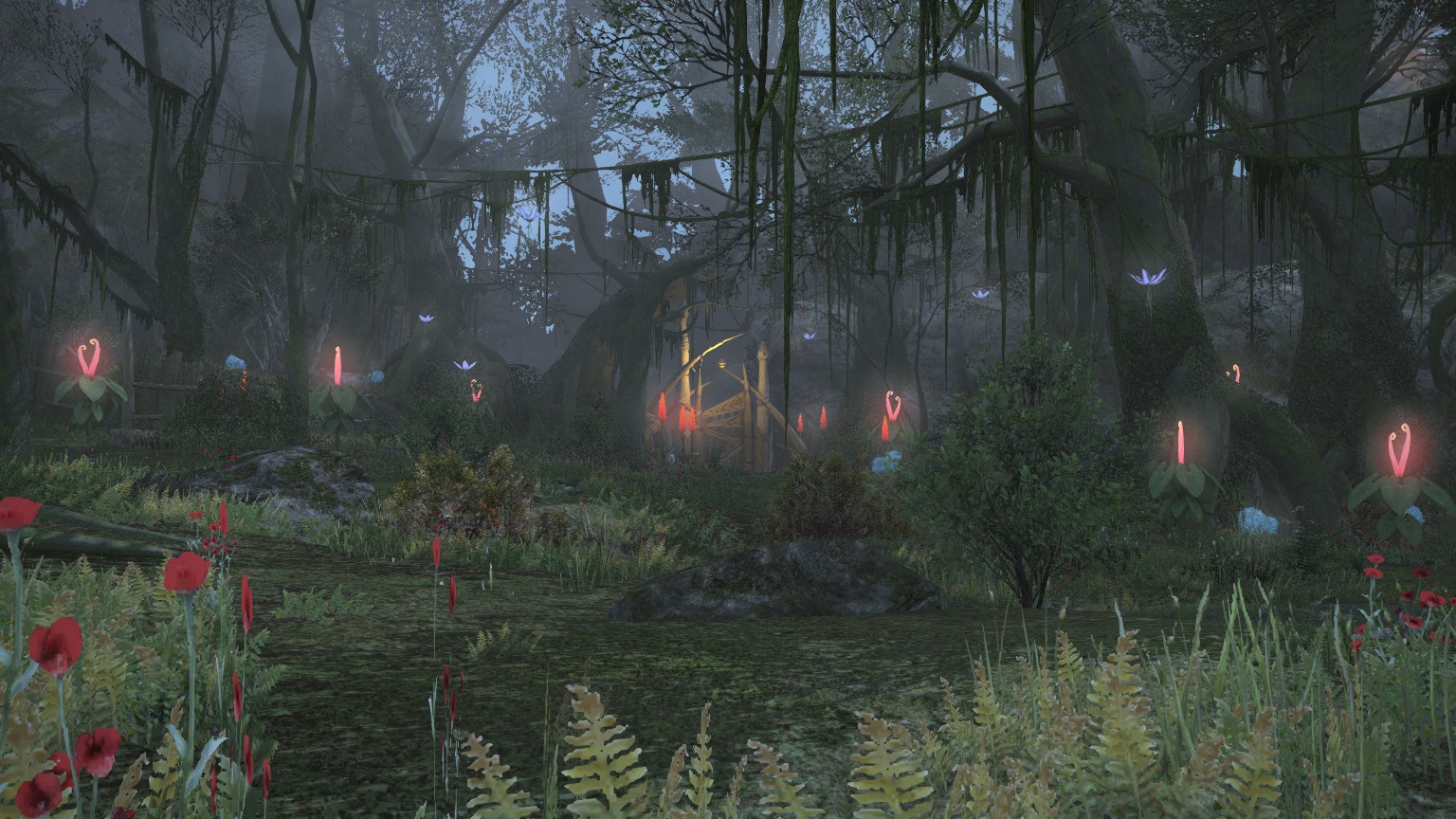The Tonberries Taxonomy: Spoken (Tonberry) Description: Tonberries are the tragic Nymians afflicted by the plague of Bitoso, sent to smite Nym down by the Mhachi. Some of these figures apparently date back to the Fifth Astral Era, while others are more recent births. They have been driven quite mad by their fate, tragically, and are very aggressive. A particularly huge variant of the tonberry was apparently found in the Palace, nicknamed the stalker, which pursued foes at a slow pace. This creature was likely swollen due to a wild imbalance of aether, resulting in its size. Treasure Hunter Taxonomy: Spoken (Various) Description: Unfortunately, not all who approach the Palace do so with innocent curiosity … [Read more...]
The Wanderer’s Palace – Oschon Profaned
Excerpt from ‘The history of Vylbrand, from Nym to Limsa Lominsa’ by Archon Niniri Niri. The Wanderer's Palace is one of the finest relics left behind from the Fifth Astral Era. The structure was a temple or similarly sacred structure dedicated to Oschon the Wanderer. In modern Eorzea Oschon is regarded as a deity of the mountains, wanderers and vagrants, and is one of the deities associated with the element of wind alongside Llymlaen the Navigator, patron deity of Limsa Lominsa. He is represented by a walking cane and as a youthful ranger bearing a bow, and is regarded as friend to Halone the Fury, patron of Ishgard and brother of Nald'thal the Traders, twin patrons of Ul'dah. His lover is Menphina the Lover. Back in the Fifth Astral … [Read more...]
The Bestiary of Brayflox’s Longstop
Gully Galago Taxonomy: Beastkin (Opo-opo) Description: Opo-opo are communal creatures that gather underneath a single dominant member, they are famed for their agility and dexterousness. These small beastkin are capable of thriving both on the ground and in the trees, and have become a common farming pest, picking fields clean when they grow hungry. Painted Colibri Taxonomy: Cloudkin (Colibri) Description: Colibri do not actually eat meat, despite their extreme aggression, instead sipping on nectar using their curved beaks. They are proficient mimics of various forms of sound, and have a latent obsession with shiny objects such as gems or gil, which they instinctually try to swallow on … [Read more...]
Brayflox’s Longstop – The Folly of Goblinkind
Excerpt from ‘The history of Vylbrand, from Nym to Limsa Lominsa’ by Archon Niniri Niri. Deep within Eastern La Noscea, is Raincatcher Gully, a ravine filled with bright flora. The research team on this project sallied into this undergrowth to find the camp of Brayflox Alltalks. Brayflox was the goblin quartermaster of the Company of Heroes, famed for her ability to source any material required by her companions as well as her beauty, at least by goblin standards. This author has heard rumors swirling of her involvement with the illuminati, but will not deign to reply to them here. The Longstop was founded as a trade outpost by Brayflox and her kin, and the goblins proceeded to expand the facility. Unfortunately, evidence from the … [Read more...]
The Bestiary of Sastasha
Black Bat Taxonomy: Cloudkin (Bat) Description: Bats reside within the dark places of the world, roosting in caves and other secluded locales. It is common knowledge that they are nocturnal creatures, but more dedicated research by the scholars of the realm has uncovered that they are capable of feats of extremely keen hearing and a technique called echolocation. Although most bats feed on insects and fruit, folklore has long held that some of them instead feed on blood. Cave Aurelia Taxonomy: Wavekin (Jellyfish) Description: Unusual creatures, dissection has demonstrated that the Jellyfish is capable of a crude form of flight by expelling gas from its body. The tendrils of a jellyfish contain potent stinging barbs which … [Read more...]
Sastasha Seagrot – The Reaver’s Lair
Excerpt from ‘The history of Vylbrand, from Nym to Limsa Lominsa’ by Archon Niniri Niri. An extensive system of caverns on the western coast of Vylbrand, Sastasha was carved from the rock by eons of erosion. The cave’s initial inhabitants were the sahagin, an aquatic race of spoken hailing from the depths of the Indigo Deep. Common knowledge amongst the people of Western La Noscea dictates that the sahagin used the cove as a meeting place, and that the name ‘Sastasha’ derives from this, meaning ‘many shells’ in their native language. The cove is sometimes referred to by a longer name, Sastasha Seagrot, and Seagrot is likely a portmanteau of sea and grotto, with a grotto being a partially submerged cave system. Roughly … [Read more...]






